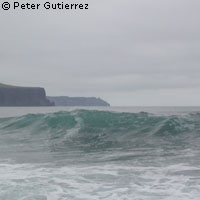International scientists set sail for Japanese earthquake zone
One of the most volatile earthquake zones on earth is now subject to international study. On 21 September the Japanese drilling vessel Chikyu departed from Shingu Port to take scientists to the Nankai Trough, off Japan's southwest coast. This is the first of four stages of the Nakai Trough Seismogenic Zone Experiment (NanTroSEIZE). Europe's participation in the experiment is coordinated by the European Consortium for Ocean Research Drilling (ECORD), funded under the EU's Sixth Framework Programme (FP6). During this first stage, which will take several months to complete, scientists will be drilling and taking samples from six different sites along the trough in order to characterise the region's geology. This will provide geotechnical information for subsequent deep riser drilling. This expedition will continue until 16 November. Another will begin the following day, with new scientists on board. In the fourth and final stage of the experiment, sensors are to be installed deep beneath the sea floor - 6,000 meters below the 2,000-meter deep oceanic bottom - to monitor the development of earthquakes at close range in the seismogenic fault zone. 'A fundamental goal of the NanTroSEIZE expedition is to put long-term monitoring instruments down inside the earthquake fault, so we can look at the physics of the fault process,' says Harold Tobin, a marine geologist from the faculty of University of Wisconsin-Madison, who is in charge of this stage of the expedition. 'We will be able to determine whether earthquakes actually have precursory signals we can measure that will provide early warning systems for the people on land.' Furthermore, IOPD scientists hope to further understanding of water motion and how water affects subduction zones, the areas where tectonic plates collide. The trough is situated at the boundary of the Okhotsk tectonic plate and has generated large-scale earthquakes and tsunamis for millions of years. Two historic earthquakes in 1944 and 1946, which measured more than 8 on the Richter scale, originated here. Masa Kinoshita, a marine geophysicist at the Japan Agency for Marine-Earth Science and Technology (JAMSTEC) and co-chief scientist in this experiment, emphasises that, to people in Japan, earthquakes and tsunamis are serious matters. 'Consequently, it is logical and relatively easy to excavate into the earthquake source to learn about the mechanism,' he says. The NanTroSEIZE expeditions are organised by the Integrated Ocean Drilling Programme (IODP). This marine research initiative is jointly funded by Japan, the United States, a consortium of European countries, China and South Korea. The European side is coordinated by ECORD, an ERA-NET Coordinated Action funded under FP6.



